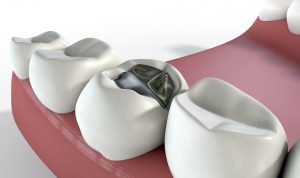Have Cavities Even Though You Brush and Floss?
25 Jul 2016
A Shocking Trip to the Dentist
Everyday I wake up, immediately spring out of bed, and head straight into the bathroom. My goal: avoid cavities at all costs. With one eye open, I twist the cap off the organic toothpaste I got at Whole Foods and squeeze it onto my toothbrush. I brush for 5 minutes straight, covering every possible angle I can before the toothbrush turns off. After unraveling a long line of floss, I take a look in the mirror. I’m halfway there. If you are like me, you take dental hygiene seriously. You use best practice flossing methods to make sure you get all the “gunk” out from in-between your teeth. When it comes to mouthwash, you don’t reach for the gentle, bubble gum flavored stuff. Instead, you choose the mouth-scorching,“don’t go near orange juice after this” kind. And like me, you feel genuine outrage when your dentist informs you of cavities during a visit. How did this happen? It feels like a slap in the face. Fear not. You aren’t alone, and there’s a good chance it’s not even your fault.
Cavities: In Our Genes
40 to 60 percent of the risk for tooth decay lies somewhere in your DNA, according to Mary L. Marazita, director of the Center for Craniofacial and Dental Genetics at the University of Pittsburgh School of Dental Medicine. Marazita is an expert who’s been studying genes since the 1980’s. While she serves on numerous advisory boards, her current research targets the human genetics of complex traits, specifically oral disease. In one of the only studies of its kind, Marazita focused on twins raised in separate environments. She found compelling similarities in the dental conditions of the twins, regardless of their exposure to external variants. The study is comprehensive, but to put it into simple terms, it seems that what we do in our everyday lives may have little or no effect on our teeth. Of course, developing good habits are vital to maintaining clean and healthy teeth and gums. If you are already great at taking care of your teeth, kudos to you. You have probably built up some great habits and you should continue them. Nonetheless, dental hygiene habits may not give us a full picture as to the reason for tooth trouble. The answer lies in our genetic makeup. Here are some of the ways genes can play a part in our dental health.Periodontal Disease
Researchers have found that family history does actually play a part in periodontitis, otherwise known as gum disease. Periodontitis is a disease that affects the gums and bone structure. Since these make up a foundation for our teeth, harming them can lead to tooth decay.Saliva
Everyone’s salivary ducts are different, and the amount of saliva created in the mouth can vary from person to person. If the body is coded to produce too little saliva, it will inevitably lead to dry mouth (xerostomia) and bad breath. Salivas purpose is to help wash away food particles left in the mouth. Not having enough of it can lead to plaque buildup and tooth decay.Taste Preferences
Believe it or not, our taste receptors are actually created while we are still in our mother’s womb, somewhere between gestation weeks 26 andto 28. Thus, our disposition to certain foods is, in fact, genetic. People who develop a certain amino acid are more likely to eat sweets, and you guessed it, are more likely to develop cavities. A sweet tooth is actually more literal than you might have thought.Enamel Strength
Enamel is a kind tissue that “coats” the tooth. It’s what wears down as a result of tooth decay. Amelogenesis imperfecta is a genetic disease that causes teeth to be “pitted or grooved”, and leads to weakening of the tooth enamel. Not to mention that enamel thickness, which plays a major part in tooth decay, is a product of many years of genetic mutation.Tooth Structure
Crooked teeth are typically passed down from generation to generation. It’s easy to see the effect that tooth misalignment has on dental health. Oddly formed teeth make it more difficult to floss in-between and much harder to reach with a toothbrush. For this, a more comprehensive approach may be the only solution.Bacteria
The trillions of bacteria that live on the surface of our bodies make up our microbiomes. These bacteria affect our health in many ways, but more importantly, they carry a major link to diseases such as cardiovascular disease, stroke, and pneumonia. In one experiment, researchers at the University of Ohio cotton swabbed the mouths of 192 participants. They found that on average, each person harbored over 149 different species of bacteria, and no two people had the exact same types. Furthermore, each person’s ethnicity had a direct effect on what types of bacteria were present. Mutans streptococci is the type most commonly associated with dental cavities.Conclusion
Not all people are created equal, and this is true in the dental world as well. Some people just have it good when it comes to their genes. We can use the fanciest toothbrush on the market or swear by a certain toothpaste but it’s important to know that this may not be enough to stop dental decay. Putting extra time and attention into our dental routine may not even yield perfect results. Only routine x-rays and cleanings by a licensed professional can catch tooth decay when it rears its ugly head. What we can control: how often we brush and floss. What we can’t control: our genetic makeup. A routine visit to the dentist is the only surefire way to catch cavities before they cause problems.Related Blog Articles